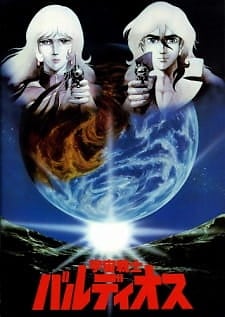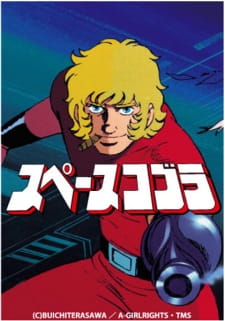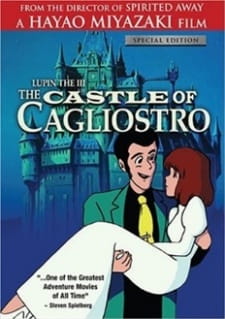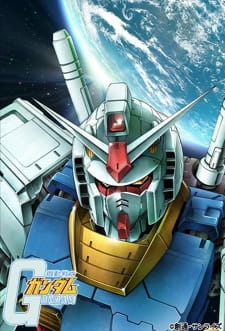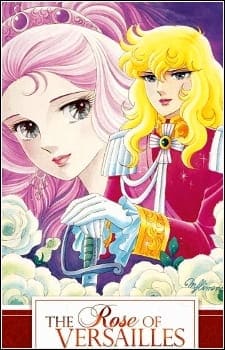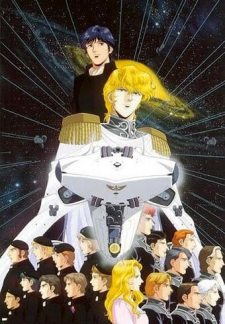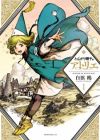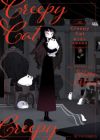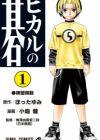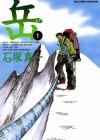Sakuga @wiki Recommended Anime part 1
Anime
from here:
https://w.atwiki.jp/sakuga/pages/100.html
This part covers 1943-1983
Part 2 coming soon, whenever I finish it.
I'm not knowledgable about all of these, as the list wasn't originally made by me, so some entries are missing detailed descriptions. Sorry about that.
https://w.atwiki.jp/sakuga/pages/100.html
This part covers 1943-1983
Part 2 coming soon, whenever I finish it.
I'm not knowledgable about all of these, as the list wasn't originally made by me, so some entries are missing detailed descriptions. Sorry about that.

Movie, 1943,
1 ep
Me:-
Author:-
Directed by Masaoka Kenzou. Shouchiku Douga KenkyuuJou.

Movie, 1963,
1 ep
Me:-
Author:10
Ootsuka Yasuo draws the aerial fight against the Orochi. Kusube Daikichirou draws the fight against the fire demon. Takahata Isao participates as assistant director. Influence on the American cartoon Samurai Jack. Touei.
https://archive.org/details/makintoonsinside0000neuw/page/78/mode/2up
https://archive.org/details/makintoonsinside0000neuw/page/78/mode/2up
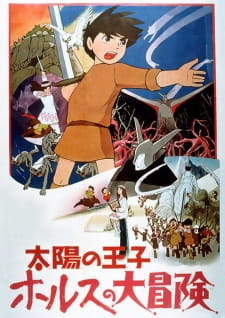
Movie, 1968,
1 ep
Me:-
Author:10
Miyazaki Hayao serves as designer and animator. Mori Yasuji draws many scenes with the character Hilda, who is considered to have been a breakthrough for animated acting. Ootsuka Yasuo draws the fight with the giant fish. Kotabe Youichi draws the ocean waves as Horus departs from his home. Kotabe, Ootsuka, and Miyazaki collaborate on the opening scene. Directorial debut of Takahata Isao. Structural basis for Nausicaa and Mononoke-Hime. Significant work for early lolicon culture. Touei.
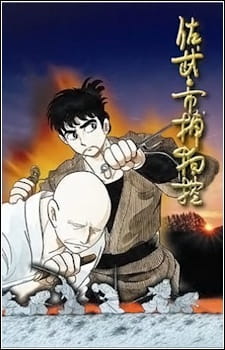
TV, 1968,
52 eps
Me:-
Author:10
Character Design debut of Sugino Akio and Murano Moribi. Kimura Keiichirou particpates on the Touei episodes. Heavy use of sketchy xeroxed drawings, and other novel production methods such as photograph cutouts and live action. Direction by Rintarou. Mushi pro, Touei, and Studio Zero.

TV, 1969,
105 eps
Me:-
Author:10
Character Design debut of Kimura Keiichirou. Novel action posing and drawing style. Heavy use of sketchy xeroxed drawings. Influenced Kanada Yoshinori and Yuasa Masaaki. Touei.

Movie, 1969,
1 ep
Me:-
Author:10
Miyazaki Hayao and Ootsuka Yasuo collaborate on the climactic chase. Character design by Mori Yasuji. The motif of scaling castle walls will appear many more times from this point onward in the works of Miyazaki Hayao. Serves as the logo for Touei. Touei.
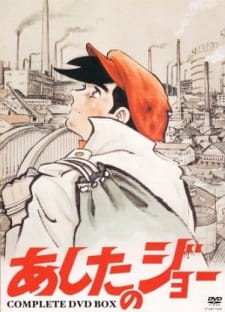
TV, 1970,
79 eps
Me:-
Author:10
Sugino Akio, Kanayama Akihiro, and Araki Shingo collaborate as drawing directors. An enormous accomplishment in the field of xerox-heavy rough and sketchy anime drawing. An entire episode is solo-animated by the director of the series. Kawajiri Yoshiaki is present as an animator on this work, although it's unlikely he particpated as a genga artist. Directorial debut of Dezaki Osamu. The basic directing and editing conventions of sports anime, and by extension, martial arts anime were defined in this work. Mushi Pro.
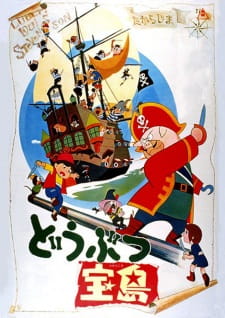
Movie, 1971,
1 ep
Me:-
Author:10
Miyazaki Hayao draws an action scene between two pirate ships, which features an impressive action choreography, war-like crowds of characters on-screen all at once, and an obscure self-portrait of Miyazaki. Kotabe Youichi draws the first scene of Jim Sailing on the ocean waves. Directed by Ikeda Hiroshi, who after this work would stop directing, and reorganize Touei, then in the mid-80s, begin working for Nintendo, bringing Kotabe along with him. This work influenced Zelda Wind-Waker's art style - though it should be noted that Kotabe did not work on Wind Waker, even though he has worked as an artist for Nintendo for many years. Touei.
https://www.nintendo.co.jp/ds/interview/dsi/vol8/index3.html
https://www.nintendo.co.jp/ds/interview/dsi/vol8/index3.html

TV, 1971,
23 eps
Me:-
Author:10
Ootsuka Yasuo serves as drawing director for all episodes. Numerous elaborate car chases and action scenes. First portion is directed by Oosumi Masaaki, and this part has a suave, dark flavor. Takahata and Miyazaki would be appointed as director under the credit "A Pro direction unit" and would lighten the tone of the work. Contrary to popular westerner gossip, the first portion of the anime directed by Oosumi and the later Takahata/Miyazaki portion are both quite beloved and influential. Watanabe Shin-ichirou has stated a strong affection for the Oosumi half of the series. TMS.
https://www.damebito.com/interview/archive/cowboybebopkh_interview.html
https://www.damebito.com/interview/archive/cowboybebopkh_interview.html
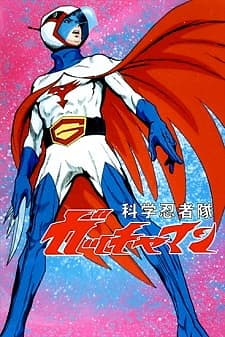
TV, 1972,
105 eps
Me:-
Author:-
Features "Tatsunoko's triumvirate" - Ninomiya Tsuneo, Suda Masami, and Kogawa Tomonori. First episode is solo-animated by Suda Masami. Drawn in an art style reminiscent of American comic books with great care given to anatomy. Directed by Toriumi Hisayuki. Tatsunoko Pro.
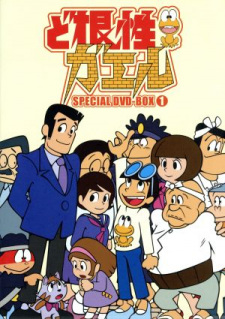
TV, 1972,
103 eps
Me:-
Author:-
Drawing direction by Kobayashi Osamu and Shibayama Tsutomu. Directed by Nagahama Tadao from episode 9 onwards. TMS.
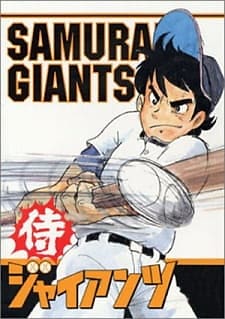
TV, 1973,
46 eps
Me:-
Author:-
Drawing direction for all episodes by Ootsuka Yasuo. The first episode is entirely key animated by Kotabe Youichi and Miyazaki Hayao, Kotabe handling the first half, and Miyazaki handling the second half. Quality sports animation. Directed by Nagahama Tadao. TMS.
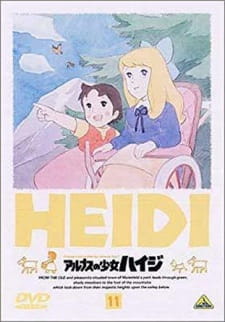
TV, 1974,
52 eps
Me:-
Author:10
In an incredible feat, this series had all of its layout drawings drawn by Miyazaki Hayao, which create a beautiful setting. Character design and drawing direction for all episodes by Kotabe Youichi. The first of three literary adaptations directed by Takahata Isao, made for the Sekai Meisaku Gekijou television block, with this production model and staff. Depicts an idyllic countryside life with great care taken for the animated acting. An iconic depiction of nature in anime, which can be considered an ancestor to Ghibli's works. Zuiyo.
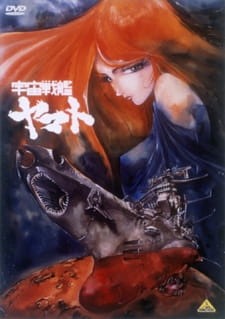
TV, 1974,
26 eps
Me:-
Author:10
Ashida Toyoo, Shirato Takeshi, and Okaseko Nobuhiro serve as the three main drawing directors all with distinct and attractive styles. Ashida Toyoo's episodes try to adhere closely to the drawing style of Matsumoto Leiji. Shirato Takeshi's episodes completely reinvent the drawing style of the characters, but the animators on Shirato's episodes are undeniably great. On Shirato's episodes, Tomonaga Kazuhide draws many impressive war-scenes, some of the best in all of anime. Yasuhiko Yoshikazu is well-known as a character designer and animator, but instead of those disciplines, he would work as a storyboarder for many episodes. Many episodes use novel animation techniques, like special paints and photography proceses.
There are many misconceptions around Matsumoto Leiji's involvement in this work, so I'll quickly clarify:
-This is not based off of one of Matsumoto Leiji's manga, it is an anime-original project that was in development before he began participating. Yamato is a very collaborative work, with many different artists involved, but strictly speaking, the original creator is Nishizaki Yoshinobu. (Nishizaki is also the producer)
-Matsumoto Leiji is the director, though he does not have a background in anime production, and was given technical support by Ishiguro Noboru, who would co-storyboard many of Matsumoto Leiji's episodes.
-Matsumoto Leiji has many uncredited drawing corrections in the first episode. (you can see his drawing corrections on the blu-ray)
The essential anime space opera and the trigger for the first anime boom. Office Academy.
There are many misconceptions around Matsumoto Leiji's involvement in this work, so I'll quickly clarify:
-This is not based off of one of Matsumoto Leiji's manga, it is an anime-original project that was in development before he began participating. Yamato is a very collaborative work, with many different artists involved, but strictly speaking, the original creator is Nishizaki Yoshinobu. (Nishizaki is also the producer)
-Matsumoto Leiji is the director, though he does not have a background in anime production, and was given technical support by Ishiguro Noboru, who would co-storyboard many of Matsumoto Leiji's episodes.
-Matsumoto Leiji has many uncredited drawing corrections in the first episode. (you can see his drawing corrections on the blu-ray)
The essential anime space opera and the trigger for the first anime boom. Office Academy.
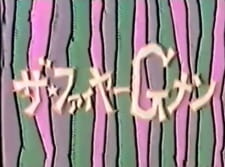
Special, 1974,
1 ep
Me:-
Author:-
Sugino Akio, Kawajiri Yoshiaki, and Oohashi Manabu. Fire Safety PSA. Direction and character design by Dezaki Osamu. Possibly an influence on Promare? Madhouse.
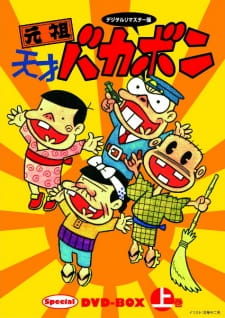
TV, 1975,
103 eps
Me:-
Author:-
Drawing direction by Shibayama Tsutomu (1-79), and Kitahara Takeo (80-103). Dezaki Osamu, Takeuchi Yoshio, and Takayashiki Hideo direct many episodes, sometimes with heavily experimental artstyles. TMS
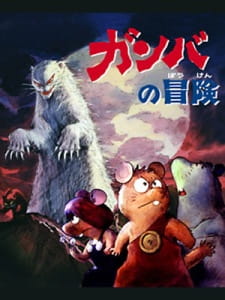
TV, 1975,
26 eps
Me:-
Author:-
Drawing direction by Kabashima Yoshio. Layouts by Shibayama Tsutomu. Violent and cartoony childrens' anime. Directed by Dezaki Osamu. TMS.
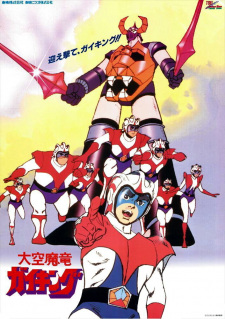
TV, 1976,
44 eps
Me:-
Author:-
Many episodes animated by Kanada Yoshinori. Some episodes are directed by madhouse staff, some have gone so far as to state that Dezaki storyboarded some of these episodes, but he remains uncredited. Touei.
http://hikawa.cocolog-nifty.com/hyoron/2006/11/post_71a9.html
http://hikawa.cocolog-nifty.com/hyoron/2006/11/post_71a9.html

TV, 1976,
52 eps
Me:-
Author:-
The same production model as in Heidi. Tomino Yoshiyuki, creator of the first Isekai anime would be credited as storyboarding roughly half of the episodes. Though many of his storyboards were corrected by Takahata and Miyazaki, he has used this series and the other Takahata-directed Sekai Meisaku Gekijou works as a model he has sought to draw from for his own work. Nippon Animation.
https://twitter.com/niitsuartmuseum/status/1451793804042801154
https://twitter.com/niitsuartmuseum/status/1451793804042801154
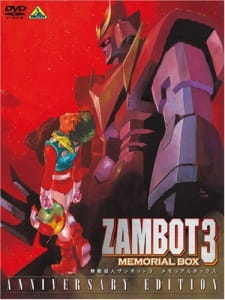
TV, 1977,
23 eps
Me:-
Author:10
Inconsistently drawn due to poor production conditions. Kanada's episodes are the highlights, but only watching those would be missing the point.
This work is also directed by Tomino Yoshiyuki, who would famously craft this into a unique, shocking work through his great ability as a director. One of Tomino's greatest directorial attributes is an ability to draw a storyboard that does not need to be well drawn by the animators in order to remain visually stimulating and dramatic. In this way, Tomino saves what could have been a forgettable, badly produced show, and transforms it into a classic work with strangely macabre motifs.
Heralded by some fans as Kanada's masterpiece, chiefly because this is the work where Kanada's drawings are most complemented by the story, rather than serving as a spectacle vehicle. Sunrise.
This work is also directed by Tomino Yoshiyuki, who would famously craft this into a unique, shocking work through his great ability as a director. One of Tomino's greatest directorial attributes is an ability to draw a storyboard that does not need to be well drawn by the animators in order to remain visually stimulating and dramatic. In this way, Tomino saves what could have been a forgettable, badly produced show, and transforms it into a classic work with strangely macabre motifs.
Heralded by some fans as Kanada's masterpiece, chiefly because this is the work where Kanada's drawings are most complemented by the story, rather than serving as a spectacle vehicle. Sunrise.

TV, 1977,
155 eps
Me:-
Author:-
The episodes worthy of looking out for are those animated by Telecom. These episodes had their animation headed by Ootsuka Yasuo. Aoki Yuuzou, Tanaka Atsuko, Tomonaga Kazuhide and other animators of note participate throughout the series. Two of the last episodes of the series are directed by Miyazaki Hayao under a pseudonym, and have many motifs that would be iterated on in his later works. TMS.

Movie, 1978,
1 ep
Me:-
Author:10
[sequel to Uchuu Senkan Yamato 1974]
Chief drawing direction by Kogawa Tomonori, who has a style of character drawing with a careful attention to perspective. Many other talented drawing directors participate. Tomonaga returns with more great battle scenes, but he is now joined by Kanada Yoshinori, who also participated in the first Yamato anime, but is now a much more skilled animator than he was then, and would come to eclipse Tomonaga in popularity in time. Yasuhiko again participates as a storyboard artist, and also draws the final scene, uncredited.
Four different directing credits exist:
Matsumoto Leiji - Kantoku ("director" in Japanese)
Masuda Toshio - Kantoku ("director" in Japanese, though he is a live action director, and likely was involved with direction given to voice actors)
Katsumata Tomoharu - Animation Director (spelled in katakana)
Ishiguro Noboru - Technical Director (spelled in katakana)
To reiterate: Yamato is a highly collaborative work
The highest grossing anime film at the time of release, and this would remain the case for 11 years after.
Chief drawing direction by Kogawa Tomonori, who has a style of character drawing with a careful attention to perspective. Many other talented drawing directors participate. Tomonaga returns with more great battle scenes, but he is now joined by Kanada Yoshinori, who also participated in the first Yamato anime, but is now a much more skilled animator than he was then, and would come to eclipse Tomonaga in popularity in time. Yasuhiko again participates as a storyboard artist, and also draws the final scene, uncredited.
Four different directing credits exist:
Matsumoto Leiji - Kantoku ("director" in Japanese)
Masuda Toshio - Kantoku ("director" in Japanese, though he is a live action director, and likely was involved with direction given to voice actors)
Katsumata Tomoharu - Animation Director (spelled in katakana)
Ishiguro Noboru - Technical Director (spelled in katakana)
To reiterate: Yamato is a highly collaborative work
The highest grossing anime film at the time of release, and this would remain the case for 11 years after.

Movie, 1978,
1 ep
Me:-
Author:10
Drawing direction by Aoki Yuuzou and Kabashima Yoshio. Notable as an attempt to closely replicate the drawing style and content of Monkey Punch's original manga. Ootsuka Yasuo is mostly absent from the production. TMS.
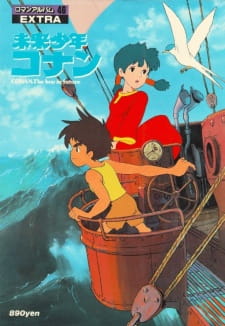
TV, 1978,
26 eps
Me:-
Author:-
Miyazaki Hayao's directorial debut. Drawing direction by Ootsuka Yasuo. Fully realized fantasy/SF setting and simply cannot be replaced as the only tv anime directed by Miyazaki in its entirety. Nippon Animation.

TV, 1978,
40 eps
Me:-
Author:10
Kanada Yoshinori participates for many episodes. 2 episodes have participation by Kogawa Tomonori. 1 episode is drawn by Yasuhiko Yoshikazu. The final episode is drawn by Shioyama Norio. Directed by Tomino Yoshiyuki. Oobari Masami's favorite robot anime. Sunrise.
https://twitter.com/G1_BARI/status/1135043024277262336
https://twitter.com/G1_BARI/status/1135043024277262336
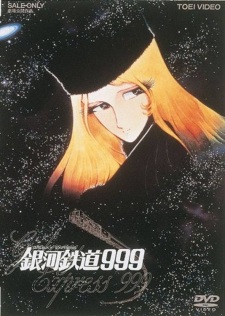
TV, 1978,
113 eps
Me:-
Author:-
Drawing direction by Komatsubara Kazuo. Tomonaga Kazuhide draws the Arcadia and Harlock. Climax scene drawn by Kanada Yoshinori, which is a pattern Rintarou would adopt for his successive movies. Directed by Rintarou. Highest grossing Japanese movie of 1979, live-action, animation, or otherwise. Touei.
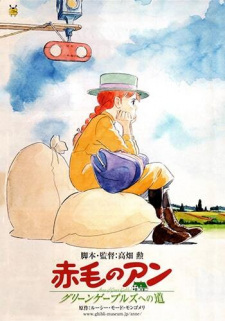
TV, 1979,
50 eps
Me:-
Author:-
The final Sekai Meisaku Gekijou work by Takahata Isao. Kotabe Youichi would not return as character designer and drawing director for this work, these roles would be handled by Kondou Yoshifumi instead. Miyazaki, having experienced directing for the first time with Mirai Shounen Conan, would find that he could not to return to working under someone else's direction. Miyazaki would leave the production partway through. Nippon Ani.

Movie, 1979,
1 ep
Me:-
Author:-
Miyazaki Hayao's theatrical directorial debut, and he handles drawing layouts for this film as well. Ootsuka Yasuo serves as drawing director, though Miyazaki would also correct the drawings of some cuts. Commericial bomb on release, but would come to be critically re-evaluated in time. The film would be shown to international investors and animation professionals by producer Fujioka Yutaka during the development period of the Little Nemo film. Spielberg is rumored to be a fan of the car chase in this movie. TMS.
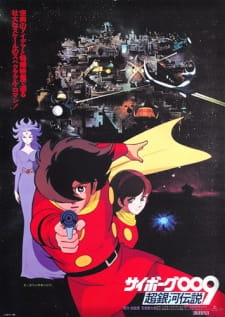
Movie, 1980,
1 ep
Me:-
Author:-
Mechanical drawing direction by Tsunoda Kouichi. Directed by Akehi Masayuki. Touei.

Movie, 1980,
1 ep
Me:-
Author:-
Character Deisgn and drawing direction by Suda Masami. Kanada Yoshinori participates. Touei.
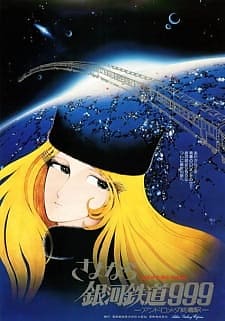
Movie, 1981,
1 ep
Me:-
Author:-
Drawing direction by Komatsubara Kazuo. Kanada Yoshinori participates. Directed by Rintarou. Touei.
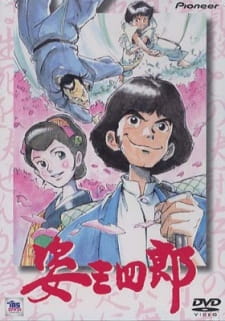
TV Special, 1981,
1 ep
Me:-
Author:-
Drawing direction by Tomonaga Kazuhide. Telecom-associated animators. TMS.
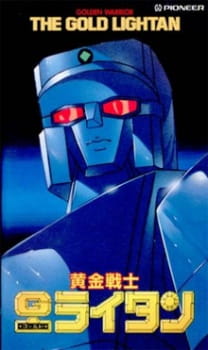
TV, 1981,
52 eps
Me:-
Author:-
Many episodes drawn by Nakamura Takashi. Nakamura's work would prompt Morimoto Kouji to leave his previous studio and work with Nakamura. These two would eventually serve as the backbone of Akira's production. Character Designs by Suda Masami. Directed by Mashimo Kouichi. Tatsunoko Pro.
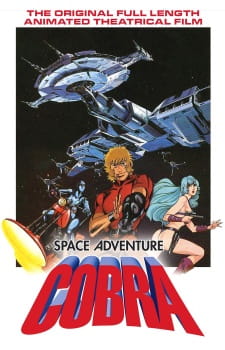
Movie, 1982,
1 ep
Me:-
Author:10
[released before the Cobra tv anime, but the introduction to Cobra's character is iconic in the original manga and is adapted straightforwardly in the anime. I recommend the first episode of the anime as an introduction before this film.]
Drawing direction by Sugino Akio. Many great animators participate such as Fukushima Atsuko, Morimoto Kouji, Nakamura Ryuutaoru, Oohashi Manabu, and Ootsuka Shinji. Highly romantic space adventure work. Directed by Dezaki Osamu. TMS.
Drawing direction by Sugino Akio. Many great animators participate such as Fukushima Atsuko, Morimoto Kouji, Nakamura Ryuutaoru, Oohashi Manabu, and Ootsuka Shinji. Highly romantic space adventure work. Directed by Dezaki Osamu. TMS.
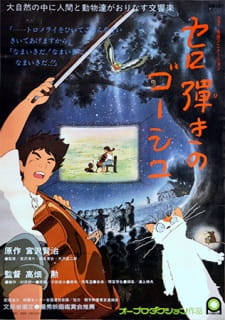
Movie, 1982,
1 ep
Me:-
Author:10
Solo-genga and all layouts by Saida Toshitsugu. Directed by Takahata Isao. Oh Pro.
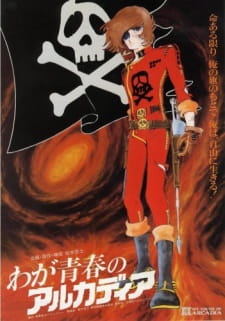
Movie, 1982,
1 ep
Me:-
Author:-
Character Design and Drawing direction by Komatsubara Kazuo. Kanada Yoshinori participates. High quality Aerial Dogfights. Directed by Katsumata Tomoharu. Touei.
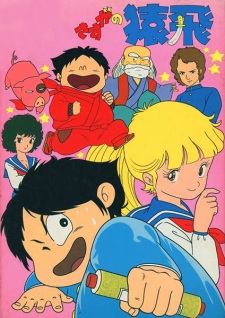
TV, 1982,
69 eps
Me:-
Author:-
Various high quality studios were outsourced for this show. Studio Giants, with Masayuki, Animal-Ya with Kigami Yoshiji, Kaname pro with Inomata Mutsumi, and Anime R with Taniguchi Moriyasu and Mouri Kazuaki. Tsuchida Pro.
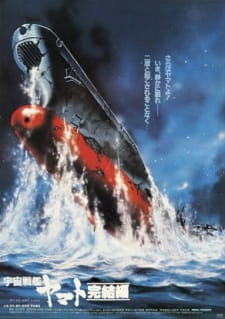
Movie, 1983,
1 ep
Me:-
Author:-
[sequel to Uchuu Senkan Yamato]
Kanada Yoshinori serves as drawing director jointly. Directed by Nishizaki Yoshinobu and Katsumata Tomoharu. West Cape Corporation/Touei.
Kanada Yoshinori serves as drawing director jointly. Directed by Nishizaki Yoshinobu and Katsumata Tomoharu. West Cape Corporation/Touei.
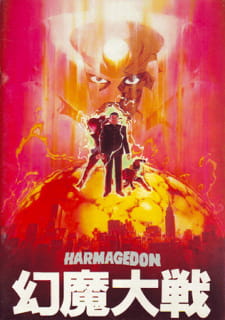
Movie, 1983,
1 ep
Me:-
Author:10
Character Designs by Ootomo Katsuhiro. Climax scene drawn by Kanada Yoshinori. Psychic confrontation scene with Vega drawn by Nakamura Takashi. First instance of a collaboration between the future Akira animators, and many associated story motifs as well. Directed by Rintarou. Highest grossing anime film of 1983, narrowly edging out Yamato Kanketsu-hen. Many iconic scenes and images. Madhouse.

Movie, 1983,
1 ep
Me:-
Author:10
[sequel to Unico 1981]
Layout and rough Genga drawn by Kawajiri Yoshiaki. Directed by Murano Moribi. Sanrio.
Layout and rough Genga drawn by Kawajiri Yoshiaki. Directed by Murano Moribi. Sanrio.
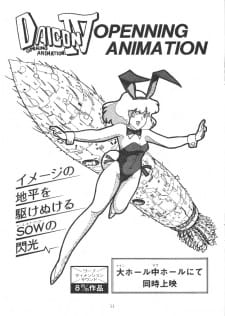
Special, 1981,
2 eps
Me:-
Author:10
Anno Hideaki serves as drawing director for all non-character portions, including explosions mecha, etc. Akai Takami serves as drawing direcor for characters. Itano Ichirou draws the Macross Valkyrie for some cuts. Hirano Toshihiro draws the cuts where the Daicon Girl throws Dyna-Robo and does a gutsy-pose. Sadamoto Yoshiyuki early in his career working as a douga artist, adds an extra bounce to the main characters' breast in the gutsy-pose cut. Yamaga Hiroyuki directs. Remarkably high quality for an independent project, and a touchstone of otaku-culture. Daicon Film (would later form into Gainax).

